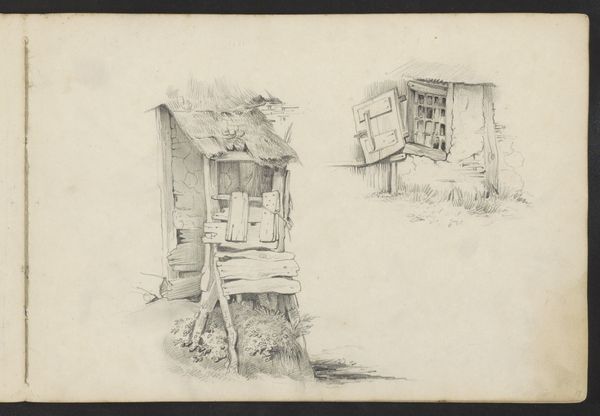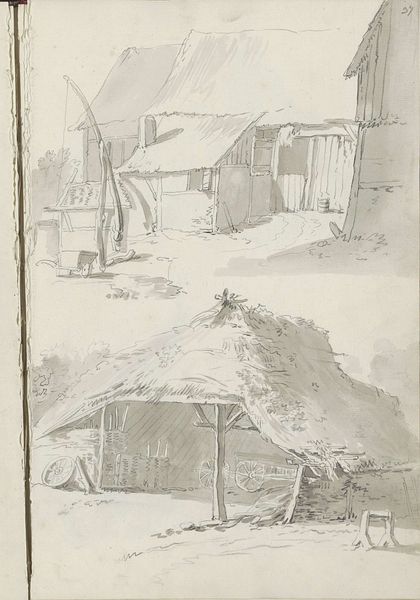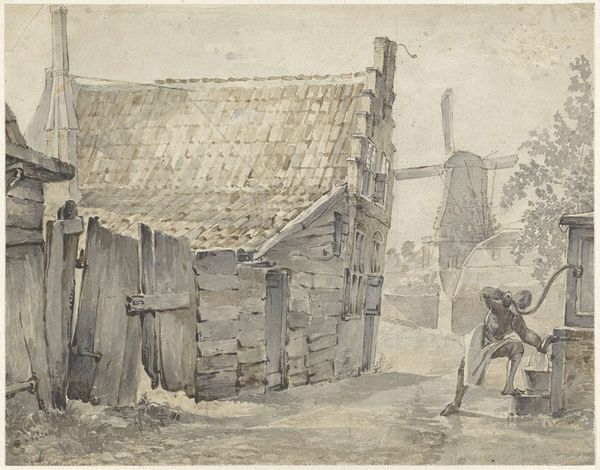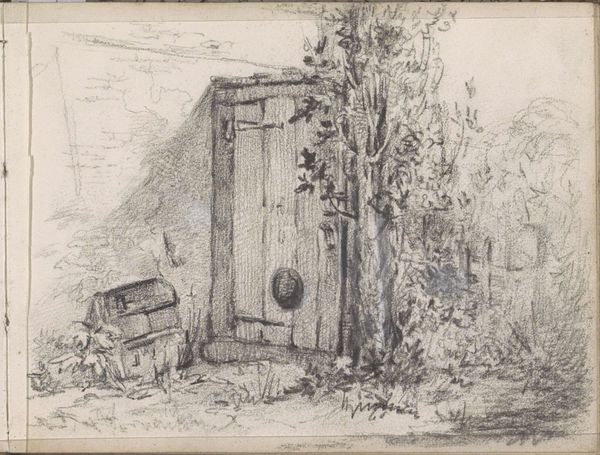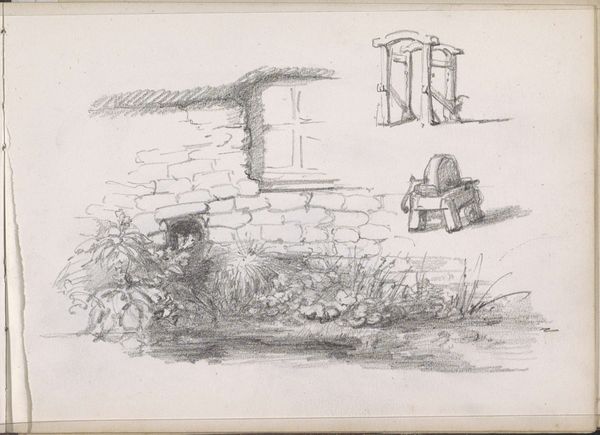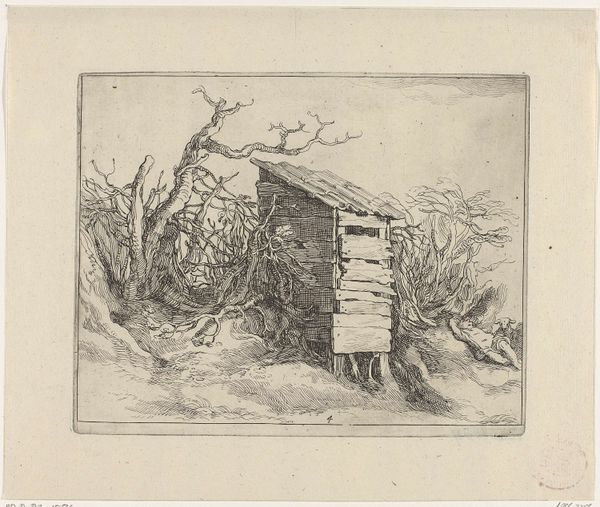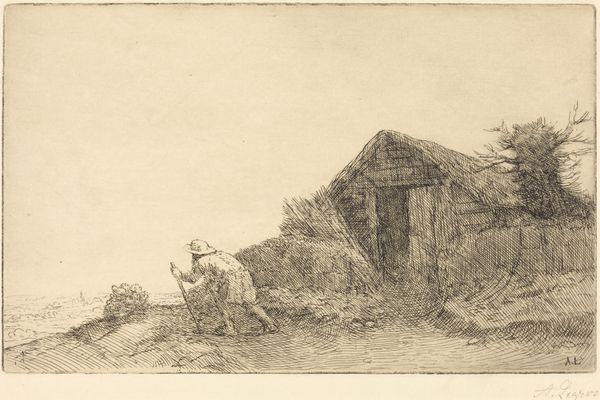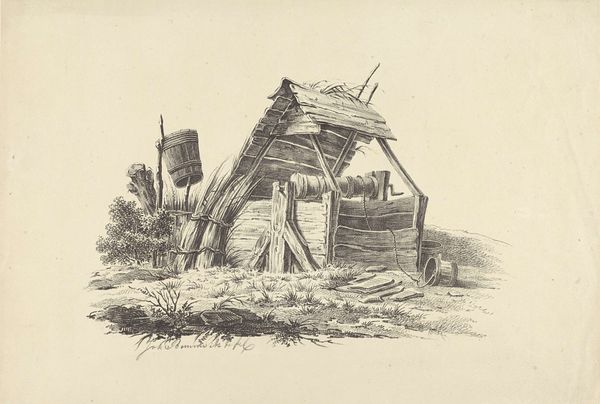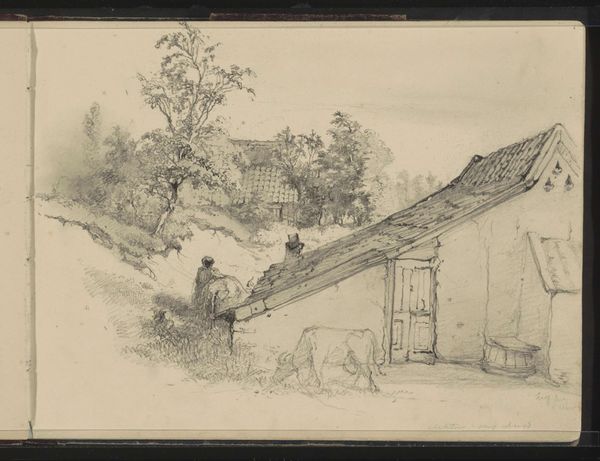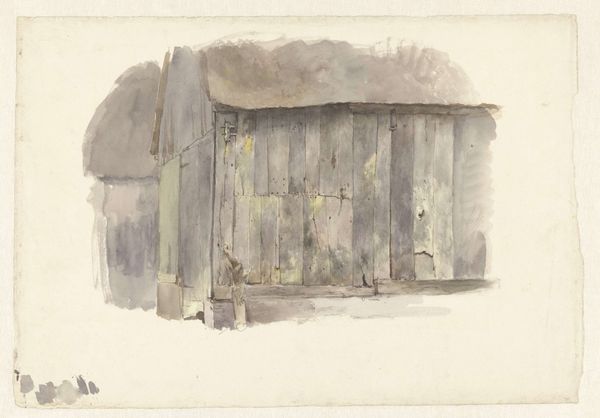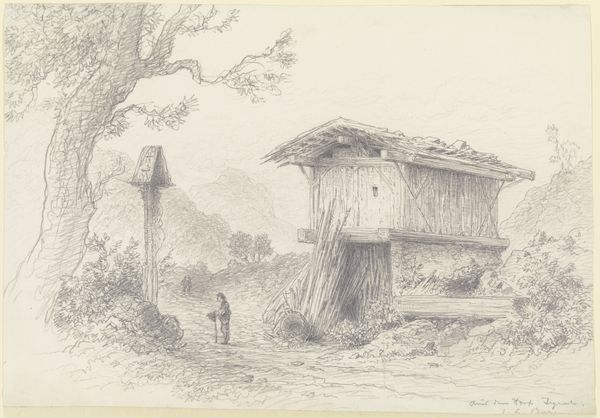
drawing, pencil
#
drawing
#
landscape
#
pencil
#
realism
Copyright: Rijks Museum: Open Domain
Curator: I find this pencil drawing by Maria Vos, entitled “Waterkraan in de open lucht”, so compelling. The work likely dates between 1834 and 1906 and is currently housed here at the Rijksmuseum. Editor: There’s a quiet melancholy in its simplicity. Two structures, almost anthropomorphic, captured in subtle grey tones. It feels unfinished, almost fleeting, a momentary glimpse into rural life. Curator: Vos was a Realist. Think of the shift toward portraying everyday subjects without idealization—this humble waterspout and shed gain dignity, elevated simply by close observation. The symbolism lies in the quotidian, not the grand narrative. Editor: Exactly! It's precisely this focus on the "everyday" that makes it fascinating. Consider the context—a time of immense social change and urbanization. These images of simple infrastructure underscore the social history. Who used that pump, and what did its presence mean for the community? Curator: I see in the pump not just functionality, but also a powerful social anchor, symbolizing a common source, both physical and communal. The rudimentary construction of both structures perhaps reflects something similar about society itself? Editor: True, it grounds the landscape, offering an important public utility and common good. Notice how she renders both the architecture and surrounding landscape, suggesting the socio-economic needs of the inhabitants. It speaks to a whole cultural framework. Curator: We must appreciate the drawing’s inherent openness. These are not posed portraits, but records of lived reality. What remains absent or implied is as compelling as the physical structures Vos chose to depict. The emotional impact lingers because it invites personal memories and reflection. Editor: I agree, in choosing a utilitarian subject, she reminds us that there is a kind of elemental symbolism in water and simple buildings. As much as her drawing illuminates that past, its effect speaks volumes about who and what society chooses to depict today. Curator: Agreed, seeing an artwork that brings clarity about everyday reality – how often do we even recognize, much less honor that in the endless pursuit of grand concepts? Editor: And recognizing the visual language deployed by Vos offers insight into not only the historical representation, but allows each viewer to participate in meaning-making itself, both then and now.
Comments
No comments
Be the first to comment and join the conversation on the ultimate creative platform.
